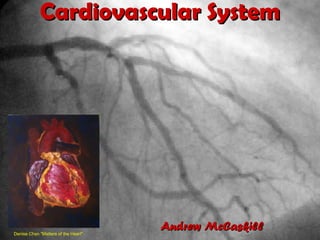The circulatory system, also known as the cardiovascular system, moves substances to and from cells and helps regulate body temperature and pH. It consists of the heart, blood, and blood vessels. The heart begins beating around 21 days after conception at a rate near the mother's, which then accelerates over the first month. Blood vessels include arteries, which carry blood away from the heart, veins, which carry blood toward the heart, and capillaries, which connect arterioles and venules and closely interact with tissues. Deoxygenated blood returns to the heart through the superior and inferior vena cavae and is pumped through the pulmonary and systemic circuits to be oxygenated in the lungs before being distributed to the body
































